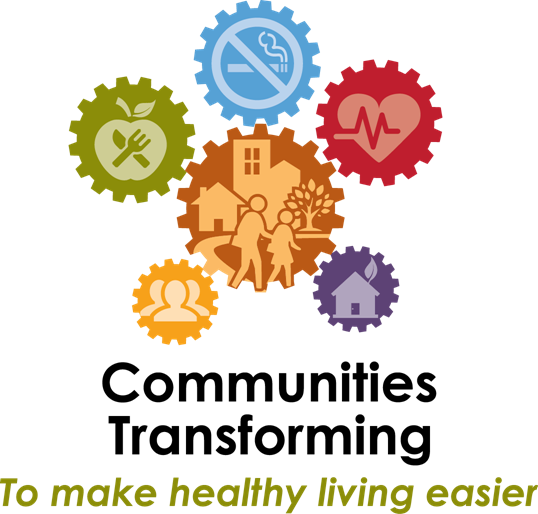7b - FAQ Guide
Att 7B_ATSS_FAQGuide.docx
Targeted Surveillance and Biometric Studies for Enhanced Evaluation of CTGs
7b - FAQ Guide
OMB: 0920-0977
Adult
Targeted Surveillance Survey – Paper Booklet FAQ Guide


Form Approved
OMB # 0920-XXXX
Expiration Date: XX/XX/XXXX
Community Transformation Grants
Program Evaluation
Frequently
Asked Questions
Guide

Public reporting burden of this collection of information is estimated to average 30 minutes per response, including the time for reviewing instructions, searching existing data sources, gathering and maintaining the data needed, and completing and reviewing the collection of information. An agency may not conduct or sponsor, and a person is not required to respond to a collection of information unless it displays a currently valid OMB control number. Send comments regarding this burden estimate or any other aspect of this collection of information, including suggestions for reducing this burden to CDC/ATSDR Reports Clearance Officer; 1600 Clifton Road NE, MS D-74, Atlanta, Georgia 30333; ATTN: PRA (0920-xxxx)
Contents
Page
What Is the Purpose of This Survey 3
Instructions for Completing Survey Questions 4
Questions about the Study 8

This guide provides information to help you complete the Community Transformation Grants survey. If you need more help, please call 855-500-1437 or send an email to [email protected].
What
Is the Purpose of This Survey? 
Community Transformation Grants (CTG) were awarded to several state and local governmental agencies and community-based organizations around the nation. Approximately $103 million in prevention funding has been awarded to 61 states and communities serving approximately 120 million Americans. The purpose of these awards was to help enact changes that will increase health equity, eliminate health disparities, and improve health in the community.
By promoting healthy lifestyles, especially among population groups experiencing the greatest burden of chronic disease, these grants will help improve health, reduce health disparities, and control health care spending.
The purpose of this study will be to collect information from community members that can help evaluate the impact of program activities.
For more information about the Community Transformation Grants program, visit www.cdc.gov/communitytransformation. or call 800-CDC-INFO (800) 232-4636.
Instructions
for
Completing
Survey Questions
For Question 19: What can I count as some types of physical activity or exercise?
Answer: There are several types of physical activities or exercise that you could count. For example, housework may be included as a physical activity or exercise. Some other examples of physical activity include, but are not limited to, the following list:
ACTIVE GAMING DEVICES (WII FIT, DANCE DANCE REVOLUTION)
AEROBICS VIDEO OR CLASS
BACKPACKING
BADMINTON
BASKETBALL
BICYCLING
BICYCLING MACHINE EXERCISE
BOATING (CANOEING, ROWING, KAYAKING, SAILING FOR PLEASURE OR CAMPING)
BOWLING
BOXING
CALISTHENICS
CANOEING/ROWING IN COMPETITION
CARPENTRY
DANCING (BALLET, BALLROOM, LATIN, HIP HOP, ETC.)
ELLIPTICAL/EFX MACHINE EXERCISE
FISHING FROM RIVER BANK OR BOAT
FRISBEE
GARDENING (SPADING, WEEDING, DIGGING, FILLING)
GOLF (WITH MOTORIZED CART)
GOLF (WITHOUT MOTORIZED CART)
HANDBALL
HIKING—CROSS-COUNTRY
HOCKEY
HORSEBACK RIDING
HUNTING LARGE GAME—DEER, ELK
HUNTING SMALL GAME—QUAIL
INLINE SKATING
JOGGING
LACROSSE
MOUNTAIN CLIMBING
MOWING LAWN
PADDLEBALL
PAINTING/PAPERING HOUSE
PILATES
RACQUETBALL
RAKING LAWN
ROCK CLIMBING
ROPE SKIPPING
ROWING MACHINE EXERCISE
RUGBY
RUNNING
SCUBA DIVING
SKATEBOARDING
SKATING—ICE OR ROLLER
SLEDDING, TOBOGGANING
SNORKELING
SNOW BLOWING
SNOW SHOVELING BY HAND
SNOWSHOEING
SNOW SKIING
SOCCER
SOFTBALL/BASEBALL
SQUASH
STAIR CLIMBING/STAIRMASTER
STREAM FISHING IN WADERS
SURFING
SWIMMING
SWIMMING IN LAPS
TABLE TENNIS
TAI CHI
TENNIS
TOUCH FOOTBALL
VOLLEYBALL
WALKING
WATERSKIING
WEIGHT LIFTING
WRESTLING
YOGA
OTHER
For Question 30: What should I count as sweetened fruit drinks?
Answer: Fruit drinks are sweetened beverages that often contain some fruit juice or flavoring. Some examples, but not all, of what to include and what not to include are listed below.
Do Include |
Do NOT Include |
Sweetened fruit drinks mixed with alcohol |
100% fruit juice Sports drinks |
For Question 31: What should I count as 100% pure fruit juices?
Answer: Include only 100% pure fruit juices, 100% pure juice from concentrate, and 100% juice blends. Do not include vegetable juices or fruit juices with added sugar. Some examples, but not all, of what to include and what not to include are listed below.
Do Include |
Do NOT Include |
Apple Orange-Pineapple |
Cranberry cocktail Powerade |
For Question 32: What should I count as the fruit that I ate?
Answer: Include cut-up fresh, frozen, or canned fruit. Do not include dried fruit in ready-to-eat cereals. Do not include fruit jams and similar products. Some examples, but not all, of what to include and what not to include are listed below.
Do Include |
Do NOT Include |
Akee
Genip Pomegranates |
Fruit jam |
For Question 33: What should I count as beans?
Answer: Include round or oval beans, soybeans, and bean burgers. Do not include long green beans. Some examples, but not all, of what to include and what not to include are listed below.
Do Include |
Do NOT Include |
Black-eyed peas Navy beans |
Broad beans String beans |
For Question 34: What should I count as dark green vegetables?
Answer: Include all raw leafy green salads and cooked greens, but do not include iceberg lettuce. Some examples, but not all, of what to include and what not to include are listed below.
Do Include |
Do NOT Include |
Arugula Mesclun |
Iceberg lettuce |
For Question 35: What should I count as orange colored vegetables?
Answer: Include all forms of carrots and winter squash and all forms of sweet potatoes. Also include all forms of pumpkin, but do not include grain-based dessert-type food containing pumpkin. Some examples, but not all, of what to include and what not to include are listed below.
Do Include |
Do NOT Include |
Acorn squash Kabocha squash |
Pumpkin bars Pumpkin cake |
For Question 36: What should I count as other vegetables not including dark green vegetables and orange-colored vegetables already listed above?
Answer: Include any form of vegetable (raw, cooked, canned, or frozen) not listed in the examples above. Do not include products consumed usually as condiments. Do not include rice or other grains. Some examples, but not all, of what to include and what not to include are listed below.
Do Include |
Do NOT Include |
American-style coleslaw
Onions |
Catsup Ketchup |
For Question 47: What should I count as plain water?
Answer: Include only zero calorie waters.
Do Include |
Do NOT Include |
Bottled water Tap water |
Water with calories |
For Question 50: What are community program meals?
Answer: Community program meals include those that are delivered to your home such as “Meals on Wheels” or meals prepared by a senior center, community-kitchen, or faith-related organization.
For Question 88: Why am I being asked to answer questions about my race twice in the survey?
Answer: In the previous questions we asked you how you would describe your own race. We also want to know how other people usually classify you in this country, which might be different from how you classify yourself.
Questions
About the Study 
The study is being sponsored by the Centers for Disease Control and Prevention (CDC).
The information collected in this survey will be used to create a report evaluating the impact of activities and strategies of Community Transformation Grants program awardees. That report will be submitted to CDC as part of its evaluation programs.
Who/What is RTI International?
RTI International is a non-profit research organization that provides research, development, and technical services to government and commercial clients worldwide.
RTI’s mission is to improve the human condition by turning knowledge into practice. You can go to our Web site at www.rti.org to learn more.
How do I know this information will remain confidential?
All project staff members have signed confidentiality agreements and are prohibited by law from using the information for anything other than this research study. Any other use is a violation of Federal law and is subject to fines and imprisonment.
Names will be removed from all data collected prior to the analysis and reporting of results. Data are reported in summary statistical format only.
I don't want to give out any personal information.
We understand that you may not want to give some kinds of information. However, all information collected will remain strictly confidential, and you can skip any questions that make you feel uncomfortable.
Will my name be used if I participate?
No, all data will be collapsed into categories—for example, the number of children of a certain age who have visited a doctor recently. No identifying information will be included.
Someone else who is age 18 or older in the household has the next upcoming birthday, but why can’t I take the survey instead?
We appreciate your willingness to take part in our study. Unfortunately, to be able to gather information about your community that is statistically representative of all members, we can survey only people who have been randomly selected to participate in our study.
Why do you need to know my race/ethnicity/income?
We would like to make sure that we obtain health information that is representative of all members of your community. This question will help us to understand if the Community Transformation Grants program is having an equal impact for all members of your community.
| File Type | application/vnd.openxmlformats-officedocument.wordprocessingml.document |
| Author | Cannada |
| File Modified | 0000-00-00 |
| File Created | 2021-01-29 |
© 2025 OMB.report | Privacy Policy